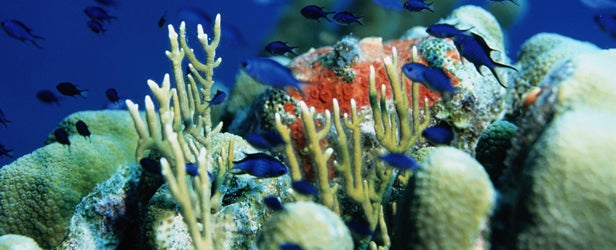ALEUTIAN ISLANDS
Stretching 1,200 miles off the coast of Alaska, the Aleutians mark the meeting point for nearly 100 species of coldwater coral, 15 whale types, 450 aquatic species, and birds—like the rare whiskered auklet—from six continents. The threats: shipping and industrial fishing.
JUAN FERNÁNDEZ ISLANDS
Chile's version of the Galápagos, these three volcanic islands 400 miles off the coast are home to rare and vulnerable species like the Juan Fernández fur seal, once thought extinct, and the orange roughy, a bright-red fish that can live up to 150 years. The threat: industrial bottom trawling.
ATLANTIC CANYONS AND SEAMOUNTS
Just off the continental shelf from Virginia to Massachusetts, these 20 canyons can plummet miles to the seafloor, providing sanctuary to more than 200 invertebrates, hundreds of crustacean and fish species, and the endangered right whale, only 300 of which survive. Scientists have also found more than a dozen new species of coral on four Atlantic seamounts. The threats: overfishing, oil exploration, and drilling.
BELIZE BARRIER REEF
There are four rare offshore atolls in the Western Hemisphere, and Belize is home to three of them. The atolls are found in the country's 186-mile barrier reef, part of the second-largest barrier reef in the world and home to at-risk species like the green sea turtle, queen conch, and spiny lobster. The threats: overexploitation, tourism, and development.
THE ARCTIC
The polar bear may be the poster animal for Arctic awareness, but summer brings an explosion of other life. Birds from all continents flock here, as do gray whales and other marine mammals. Year-round residents include the bowhead and beluga whales and the otherworldly narwhal. The threats: pollution, oil exploration, new shipping routes, and climate change.


